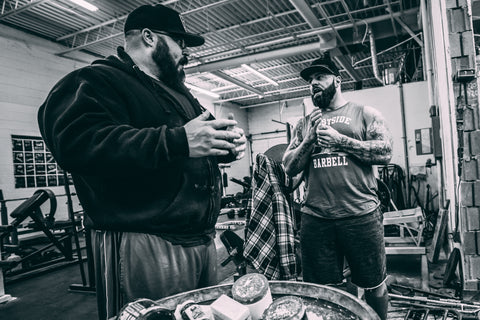Understanding the Anderson Squat

You should know the name Paul Anderson if you are a strength athlete. Paul was a legendary Olympic weightlifter, powerlifter, and strongman. This man possessed unbelievable strength and was very forward-thinking with his training methods. Before specialty barbells and powerlifting machines became popular, Paul created special exercises to challenge his body in ways the typical barbell lifts could not.
One of the ways Paul achieved this was by removing the eccentric phase of a lift, specifically the squat. This squat variation is what is commonly known today as the Anderson squat. An Anderson squat is a concentric-focused squat, making it an excellent choice for lifters who struggle with starting strength.
Like the box squat, Anderson squatting will positively impact your rate of force development. Additionally, by eliminating the stretch-shortening cycle and emphasizing the concentric phase, this exercise will greatly improve absolute strength.
How to Set Up an Anderson Squat
Successful execution of an Anderson squat will always depend on how you set your barbell up. Here is what you will need to set up an Anderson squat properly:
- Squat Rack (avoid using a monolift)
- Squat Bar or Specialty Barbell
- Spud Straps or Heavy Chain
You want to use a cage-style squat rack over a monolift because of the risk of the monolift flipping over if you were to dump the weight into the straps or chains. Most squat racks have a pull-up bar across the top of the rack; this is where we hang the straps or chains.
You want to have the straps or chains set at a height that starts the lifter out in the same position they would be in if they were deadlifting. This means that when you begin your Anderson squat if you were to put your hands down, you should be in the same position you would be in if you were about to perform a conventional deadlift.
The straps or chains should be positioned on the barbell away from the hands to ensure you don't crush them when you let the bar down. This means that if you have a close squat grip, set your straps wide, and if you have a wide squat grip, set your straps closer to your shoulders. The same way you push the rack arms in or out on a monolift to account for a lifter's setup.
How to Execute an Anderson Squat
Now that you have the exercise set up, it is time to execute. First, you want to get under the barbell and place it onto your upper back in an advantageous position that allows you to get your torso and hips under the barbell properly. This should mimic your optimal conventional deadlift starting position, with the chest elevated and the trunk maximally braced.
Once you have achieved optimal posture and bracing, you should be in a position that allows you to squat the barbell up without any pain, only the difficulty of lifting a heavy barbell without the energy carried over from the eccentric phase of the lift. Anderson squats should be challenging and cause you to strain. However, they should not cause any unusual pain.
If you find yourself experiencing atypical pain or discomfort, make sure your barbell is set to the correct height. Placing your barbell starting position too low will not only limit your ability to inhale and properly brace, but you will also put yourself at a mechanical disadvantage and severely limit the weight you can use and the workout's overall effectiveness.
You don't want to set the bar ass to grass, and you don't want to set the bar high (unless you're an athlete or training a specific ROM). Ideally, you want the bar to place you slightly below parallel but still in an advantageous position, so the burden of the lift is placed upon the back, glutes, hamstrings, and trunk.
A Useful Variation
Nowadays, it can seem like you read about a new exercise variation every week. After a while, it may seem like some of these variations you hear about are just gimmicks social media influencers use to create some new content.
Anderson squats do not fall into this category. This exercise is a tried-and-true strength training movement that has provided gains in absolute strength for over half a century. Whether you are a powerlifter, Olympic lifter, strongman, CrossFit competitor, Athlete, or someone interested in general fitness, we can all benefit from Anderson squats.
Don't take my word for it; listen to quite possibly the strongest man to ever walk the face of the Earth - Paul Anderson.
Sources:
Simmons, L. (2007). Westside Barbell Book of Methods. Westside Barbell.
Verkhoshansky, Y., & Siff, M. C. (2009). Supertraining. Verkhoshansky.





